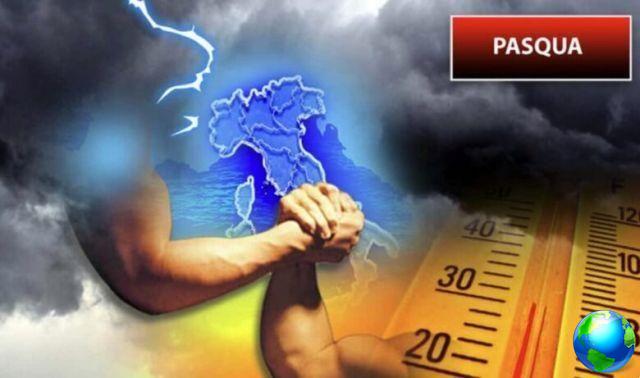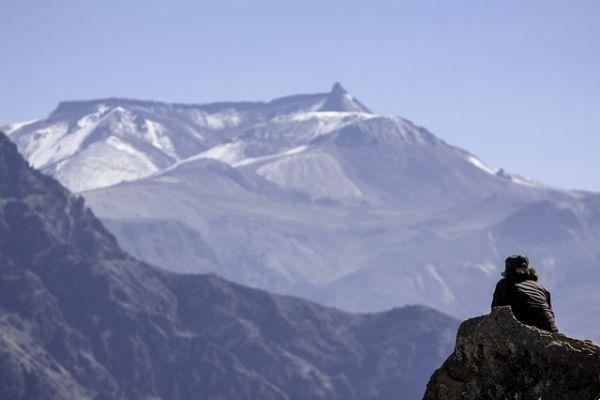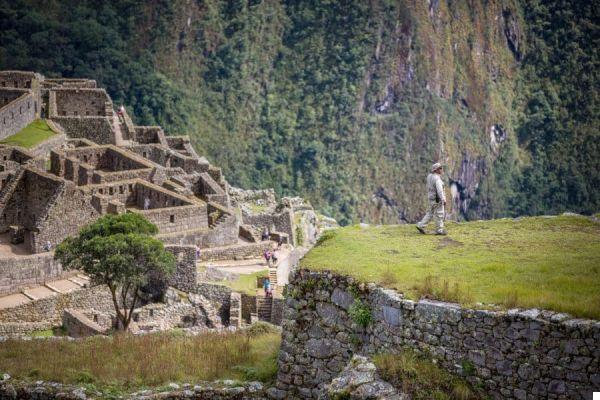With a year of delay I finally decided to write about mine trip to Peru and this is only the first of several articles I will write about the most famous (and touristic) country of South America.
Peru needs no introduction, and I, who am sick of South America (here you will find all the articles I have already written), certainly couldn't let it slip away! Like the other South American countries I have visited (Chile, Argentina and Ecuador in particular), traveling to Peru is very easy and lends itself to being explored with a do-it-yourself trip, without any problem. Those who are unfamiliar or have no time can still rely on a local tour operator (see below). But let's go in order ..
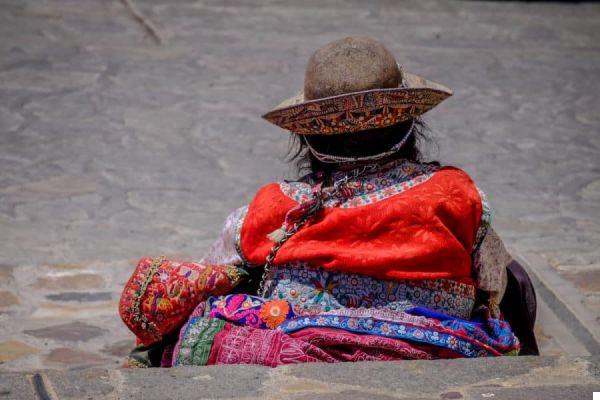
Peru: necessary documents and vaccinations
You don't need a visa to enter Peru, unless you intend to stay more than 183 days in the country. The only document required is the passport, with residual validity of at least six months upon arrival in the country. There are no mandatory vaccinations, but the following vaccinations are recommended: yellow fever, hepatitis A and B, if you intend to go to the Amazon. In any case, always refer to the Viaggiare Sicuri website of the Ministry of Foreign Affairs.
When to go to Peru
In You can go to Peru all year round, without particular problems, bearing in mind that the seasons are reversed compared to ours. July and August therefore correspond to winter and December-January to summer. The difference is made by the rains: between December and February it rains quite a bit everywhere and a lot in the Amazon and in February the Inca Trail is closed for maintenance. The high tourist season corresponds to the months of June, July and August, which is the dry season and the season in which Europeans and North Americans have holidays. In these months the sky is almost always blue (except in Lima, where you will find haze and gray skies) and the temperatures in the Andes are very rigid (it also goes below zero on Lake Titicaca and in the Chivay area). September October e from March to May these are the intermediate seasons in which the weather is still good, but you spend a little less.
Health Insurance is required
In Peru our health coverage is not valid. My advice is to always take out medical-luggage insurance that can cover you during the trip. I am very happy with many insurance companies, a site that compares the policies of different companies and proposes the most convenient policy for that particular trip. To do this you will have to enter the data relating to your trip (country, duration, etc.) and they will send you an email with the best proposal that you can then buy directly online (!!!).

How to get around Peru
bus
As with many other countries in South America, buses are the most used means by both locals and tourists. The network is widespread, the fares are affordable and the rides are frequent, especially on the long-distance lines that connect the tourist resorts. The buses are new and modern and you can reserve a seat with a half-reclining seat (the so-called semi-cama) or fully reclining (or cama, on buses called Royal or Executive). All buses have bathrooms and they also provide you with a snack and a drink (even a hot meal in the luxury ones!). Traveling by bus overnight is a great way to save money (you won't have to pay a hotel night) and time. Among the most used companies are Cruz del Sur, Oltursa, and Transportes Linea. To buy bus tickets you will always need to show your passport.
Train
Il train is used almost exclusively by tourists and connects Aguas Caliente (Machu Picchu) to Cusc or Ollantaytambo and Cusco to Puno, on Lake Titicaca. These are scenic trains, very beautiful, and the two (privatized) railway companies that offer these connections are there Peru Rail andInca Rail.

Plane
If you don't have many days to spare, internal flights (especially those to and from Lima) are undoubtedly a great option. The main company that offers internal flights is the LAN ; please, always check-in the day before because overbooking here is absolutely the norm !!
Car / Minivan
The roads in Peru are quite good, at least the ones that lead to the tourist resorts (except for the road that leads to Rainbow Mountain, which is rough to say the least!) So you can also consider renting a car and driving independently. I don't recommend it too much, however, especially for economic reasons but also for convenience: between altitude and travel, traveling in Peru can be quite tiring, better let someone else drive! If you really want to do it, you can see the rates and book through the Rentalcars website.
Car / minivan with driver and local tour operator
As I told you at the beginning, if you don't have time to organize your trip or you are unfamiliar with it, you can rely on a local agency who will organize it for you and will also provide you with a car / minivan with driver. I have had experience with this local agency and I was happy with it. They can also take care of buying entrance tickets to Machu Picchu or the Inca Trail.
Taxi/Uber
Especially in Lima you will find yourself having to use the taxi to move from one neighborhood to another or from the airport to the hotel. Lima is not a particularly safe city so my advice is to always use official taxis (at the airport you will find the stalls before you leave); when you are in the hotel / restaurant, let them call you. You can also use Uber, but, personally, I was advised against it in Lima (again for safety reasons, because anyone can do it).
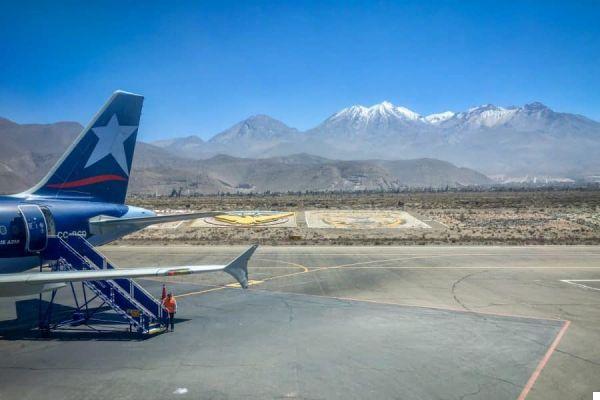
What to see in 2 weeks: the itinerary
- arrival in Lima
- Arequipa (or Nazca / Huacachina lines)
- Arequipa
- Colca Canyon e Chivay
- Mirador de los Andes e Puno
- Lake Titicaca
- Rainbow Mountains
- Cuzco
- Cuzco
- Valle Sagrada and Ollantaytambo
- Machu Picchu,
- Cusco
- Lima / Paracas
- Lima
If you have more time, my advice is to explore theAmazon and, especially, Huaraz and the Cordillera Blanca (north of Lima) with its incredible treks. I entered the dune in Huacachina and Nazca lines only as an option because I was not too interested, but surely you can enter both between Lima and Arequipa.

Where to sleep in Peru
- Lima : Larq'a Park Rooms (room / apartments in the center of Miraflores) or Lima White House (hostel in Miraflore)
- Arequipa: Posada Nueva España (very nice posada a stone's throw from the center)
- Chivay: Colca Land Hostal (small hotel in the center - not much choice in Chivay)
- Titicaca : you sleep with local families, on the island of Amantani or Taquile - it is organized on site
- Sicuani : Hostal Koricancha (modern, new and clean hotel)
- Cuzco : Nao Victoria Hostel (hotel / hostel in the center, nice and super clean)
- Machu Picchu (Hot Waters) : Gringo Bill's Boutique Hotel (a little gem in the squalor of Aguas Caliente)
Altitude and altitude sickness
Peru is crossed by Ande, that here they reach 5000-6000 meters (nonsense!). This scares many travelers, but I want to reassure you: if you take the appropriate precautions you will not suffer from altitude sickness (even if there is a great individual difference that does not depend on age, training, etc.)! The golden rules to avoid feeling bad are:
- THEacclimatamento (the first time you reach altitudes above 3500-4000 meters, it is good to try to stay still at least a couple of days before moving)
- Go to increasing altitudes (the proposed itinerary does just that ..)
- Always drink plenty of water (and little alcohol) e eat light
- Use natural remedies (e.g. the famous coca leaves) or not (e.g. the diuretic Diamox, which you can bring with you from Spain).
Security in Peru
Peru is a generally safe country and you just need to stick to the rules of common sense. The only place I haven't perceived as safe is Lima. Outside the historic center or the “rich” districts of Miraflores and Barranco, it is not a city considered safe and the Peruvians themselves tell you to be careful. Along the 1h route between the airport and the center / Miraflores many tourists are robbed, but you just need to keep your bag or backpack not seen on the taxi seat. Ditto when you walk, try to always walk close enough to the wall and with the shoulder bag because the moped snatches are quite frequent.

How much is spent: money and cost of living
Peru is an economic country for us. The official currency is the SOL (exchange rate in September 2019 1 euro = 3,74 sol). Will find ATMs everywhere and you will have no problem withdrawing with the most common credit cards. In general, however, avoid crawling because the commissions are high and often do not accept credit cards. The most expensive things of the trip will be the entrance ticket to Machu Picchu (or the Inca Trail) and the train to reach Aguas Caliente (but there are ways to save a little). A full meal can be found starting from 5 euros and a bed in a hostel costs you between 5 and 10 euros (in a nice hotel around 20-25 euros per person).
Internet and SIM
If you want to stay connected and be able to make phone calls (even local ones), it's worth it buy a local SIM. I did it with Clear (one of the biggest operators that takes pretty good everywhere) and I paid around 10 euros to get 3G + internet phone calls. Don't buy it at the airport which costs more! In the center of Lima, on Jiron de la Union, but also in Miraflores, you can find them for less. However, all hotels / hostels have wifi (except on Lake Titicaca, where the mobile phone takes little in general).

Things to book before leaving
Regardless of the season you go there, I recommend that you buy the return train ticket between Ollantaytambo and Aguas Caliente (Machu Picchu) and the entrance ticket to Machu Picchu / Inca Trail well in advance !! To buy the entrance ticket to Machu Picchu you will have to use the official website or from the Get Your Guide website (see box below). Find all the super-detailed info in the article Machu Picchu and Inca Trail (Peru): how to get there, tickets, costs.
If you go to Peru in the high season you will not have too many problems to book the structures hand-in-hand, but you may have little choice, so my advice is to book a good part of the accommodations already before leaving. The buses, on the other hand, can be picked up gradually, once on site.
What to put in the backpack
Considering the altitudes, a trip to Peru cannot be missing technical clothing and above all very warm. Don't forget to pack:
- trekking shoes
- thermal shirts
- down
- waterproof windproof jacket
- gloves
- hat
- scarf
- high sun protection
- tights
- fleece / sweatshirt
- altitude medications (Diamox)
- lighter clothing for when you are at low altitude
Find many other tips on how to make the backpack in the article How to prepare your travel backpack: the perfect backpacker





